Starhotels Collezione Italy: the Grand Tour updated for the 21st century
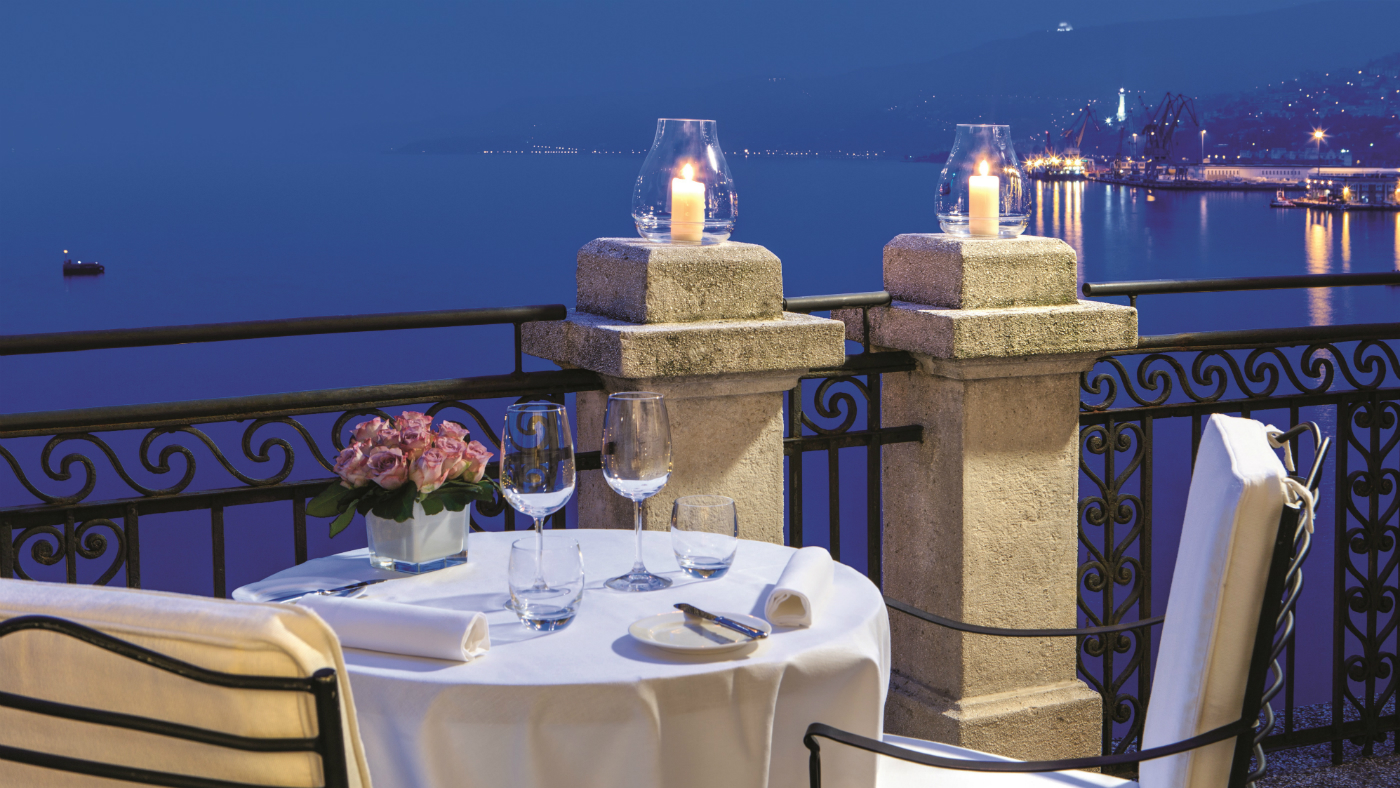
In the 17th and 18th century, affluent young Englishmen of a certain rank would often embark on a “Grand Tour” of Europe.
The trip, mounted when young men were regarded as having come of age, was intended to complete their classical education, through encounters with the wonders of antiquity and the Renaissance. A typical journey would take a man (as well as his chaperone and travelling entourage) across France and down through Italy, before returning, if time and finances allowed, through Germany, Austria and the Netherlands.
These days, travelling across this part of the world is significantly easier and is no longer exclusive to the fabulously wealthy, with cheap airlines and high-speed rail linking the continent and opening the wonders of European art and antiquity to anyone with the time and the inclination to explore at their leisure.
The Week
Escape your echo chamber. Get the facts behind the news, plus analysis from multiple perspectives.

Sign up for The Week's Free Newsletters
From our morning news briefing to a weekly Good News Newsletter, get the best of The Week delivered directly to your inbox.
From our morning news briefing to a weekly Good News Newsletter, get the best of The Week delivered directly to your inbox.
Time, of course, is one commodity that remains in short supply for non-aristocrats today as it was 200 years ago, meaning many travellers may cut the traditional Grand Tour up into chunks, and do it bite by bite.
That is exactly what The Week Portfolio did recently, plotting a tour around the northern and central parts of Italy, staying with the Starhotels Collezione, which has gloriously high-end hotels dotted all across the country. We began our tour in:
Siena - Grand Hotel Continental
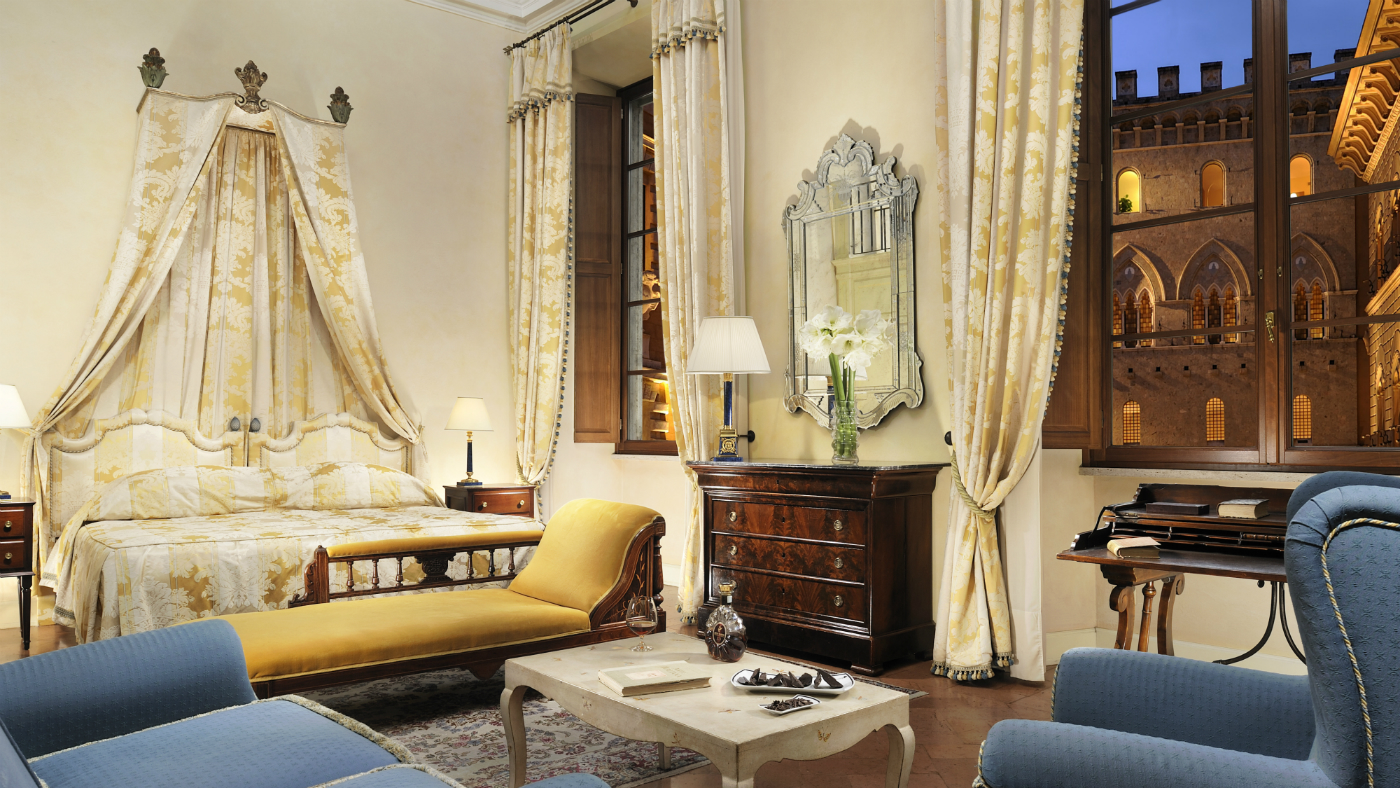
Having touched down in Florence we collect the car arranged for us by our tour operator Kirker Travel, a Fiat 500 (could an Italian road trip be done in anything else?), and embark on the scenic one-hour drive through rolling Tuscan hills to Siena.
A free daily email with the biggest news stories of the day – and the best features from TheWeek.com
Trying to interpret the instructions of the sat-nav and the hotel, we take two loops of the city centre before finding our way to the appointed rendezvous spot, where a doorman has come to greet us. The Grand Hotel Continental sits deep in the pedestrianised heart of town and before we get out of our car, we are chaperoned through seas of tourists, until we arrive at one of the city's central piazzas. "Leave the car here, it will be fine", says our guide as we park up next to a thousand-year-old fountain. And so we do, and sweep into the first of our hotels, already feeling like royalty.
The Grand Hotel Continental is worth every one of its five stars, and true to the claim of its website sits just a few steps away from Piazza del Campo and the Duomo di Siena. Vast vaulted ceilings soar overhead as you enter, all adorned with frescoes which have benefitted from painstaking restoration to bring this grand building back to its former splendour.
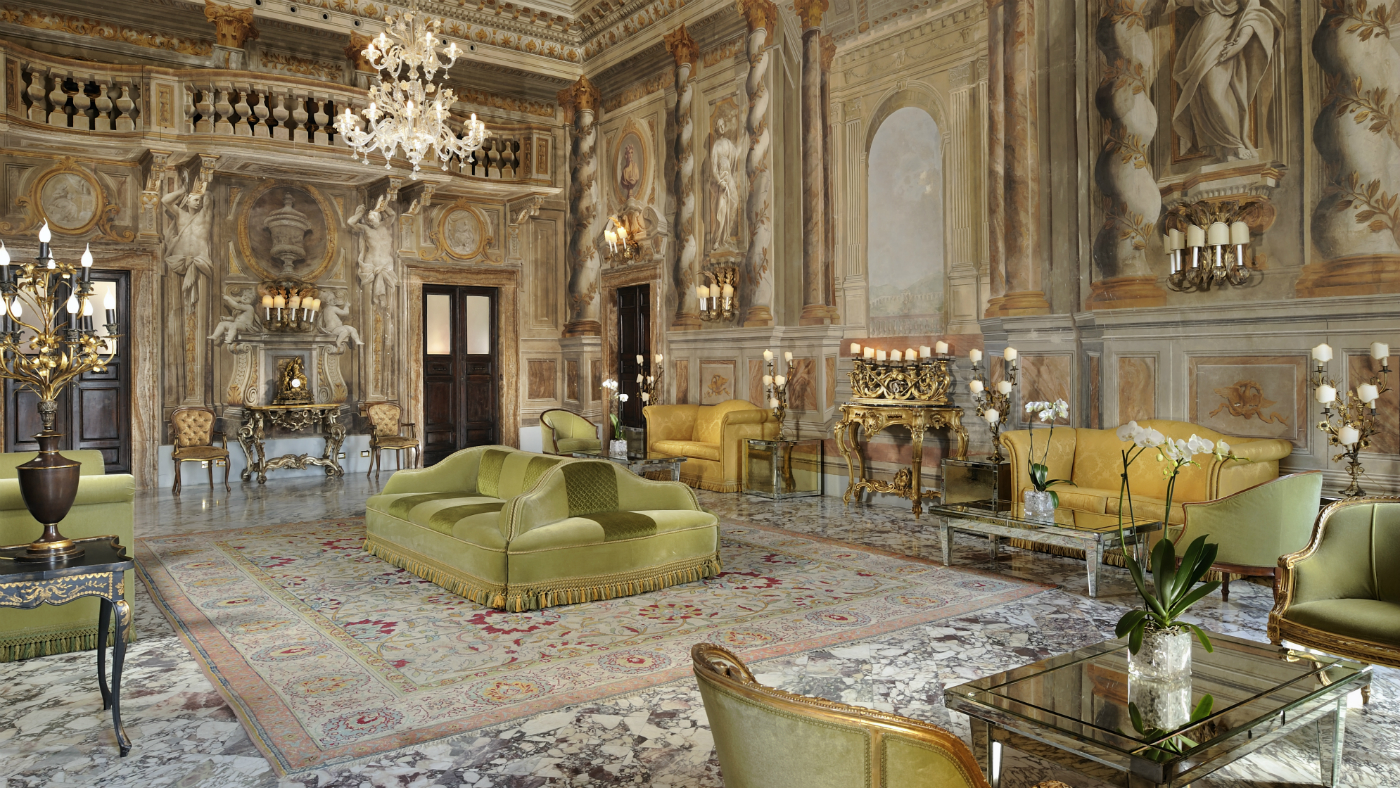
The building itself was previously known as the Palazzo Gori Pannilini, an aristocratic residence which is thought to have been built around 1500. As legend has it, the palace was later reconstructed by Pope Alexander VII, a member of the powerful Chigi family, as a wedding gift for his niece Olimpia in 1677. It then became a favourite stop for the rich and wealthy travelling the grand tour, so a fitting place to begin our trip.
Suites are almost as vast as the public spaces, with views over the city and some of the most evocative monuments of Siena, including the Duomo and the church of San Domenico.
As you walk across your room (and it is a bit of a trek from one side to the other) your heels will click on Tuscan terracotta floors, and all around are opulent furnishings, antique paintings, and yes more frescoes which here create a marvellous tromp l’oeil effect. All about you are damask tapestries and Murano glass chandeliers - and to complete the grandeur, bathrooms lined with marble.
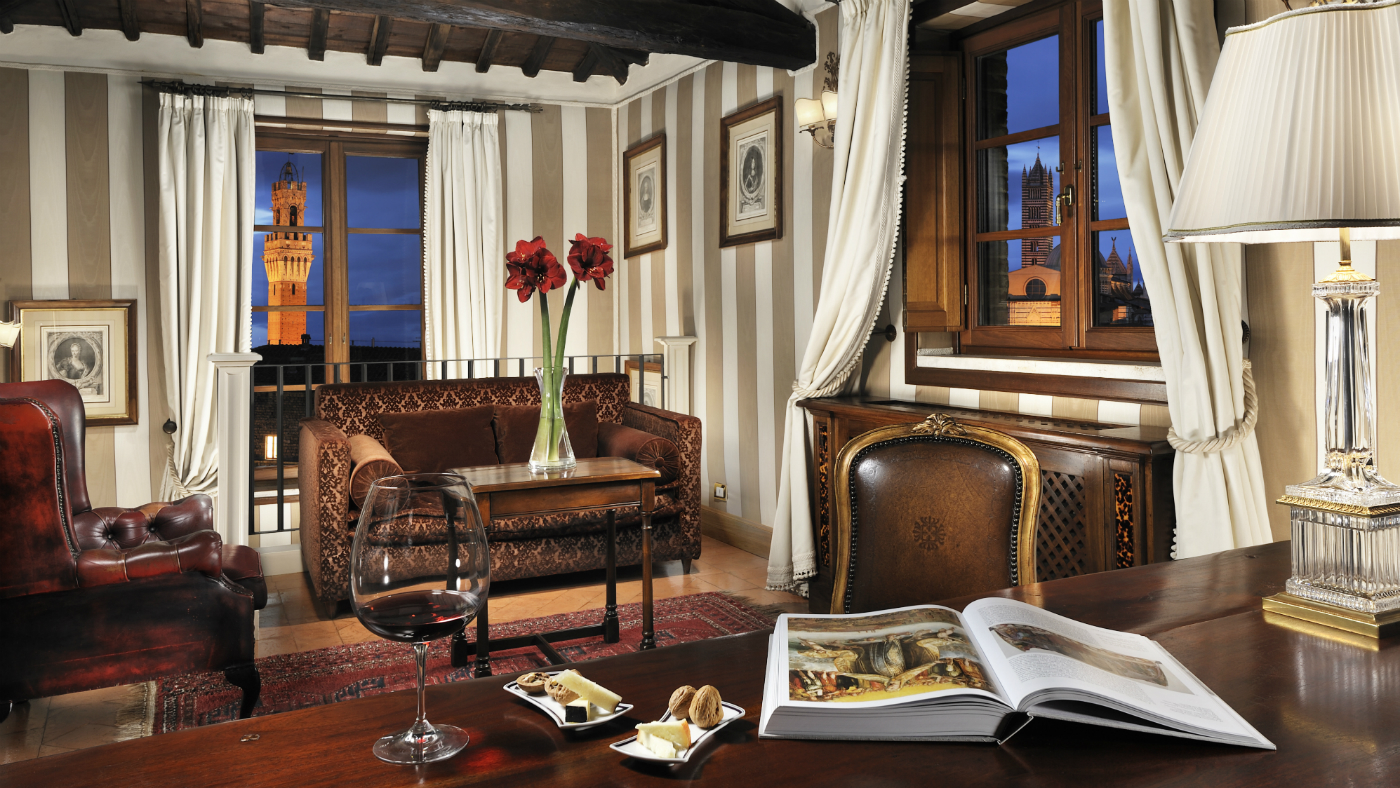
Siena is a city full to the brim with excellent restaurants, and no doubt guests of the hotel will be keen to wander out into the night - and the perfect place to begin is with an aperitif on the Campo. Take your pick form the restaurants that line the sloping cobbled square, or do like the locals do and take a seat anywhere around the square with your own drinks and snacks. Bar Il Palio is a good bet if you haven't come prepared, however, and is a favourite with locals, as well as tourists, who swarm through this part of town.
Breakfast though should be taken back at the hotel’s own Sapordivino restaurant whose buffet options, plus extensive menu of bespoke dishes offers everything you could possibly need for a day exploring the local area, or even your trip onward to:
Vicenza - Hotel Villa Michelangelo
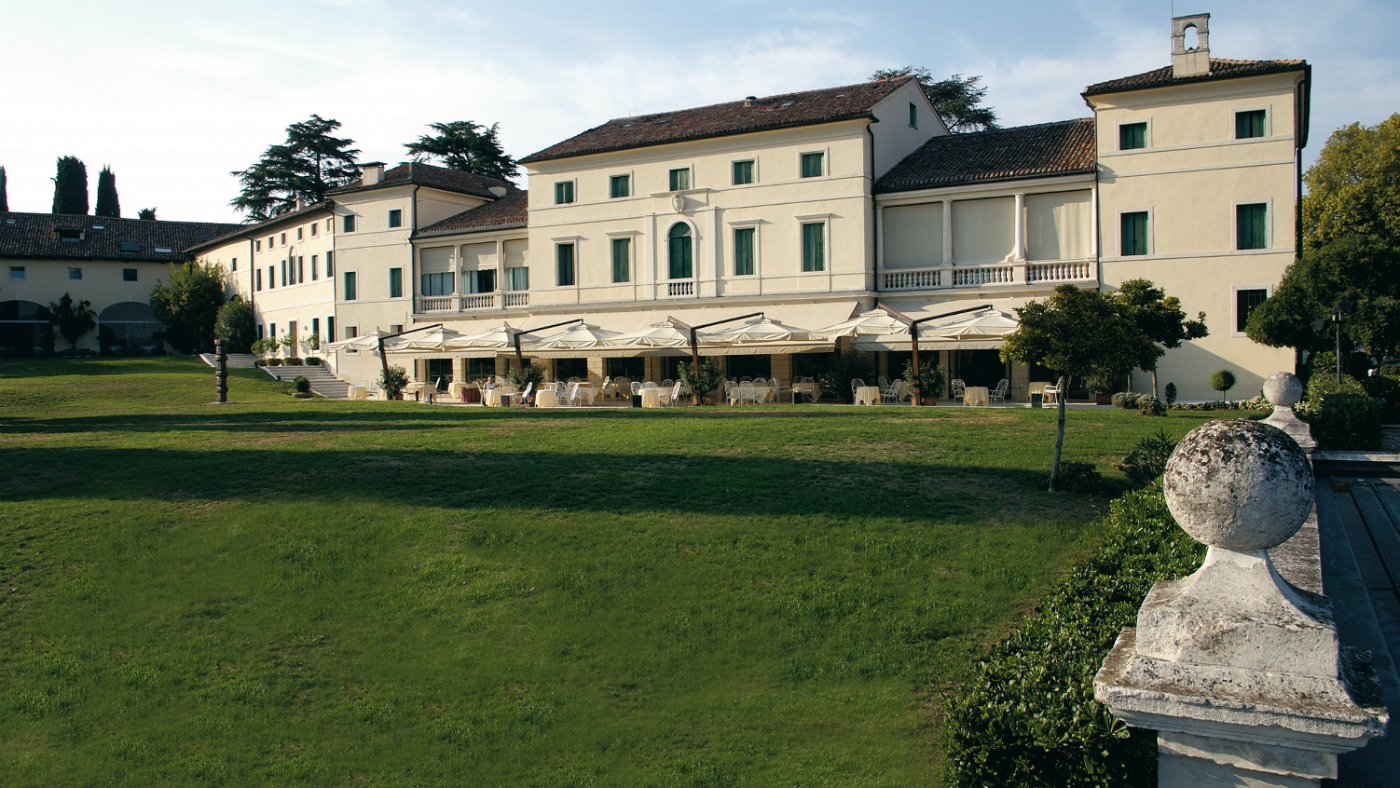
Unquestionably, some of Italy's prettiest countryside is to be found in Tuscany, where every turn of the steering wheel brings into view a new mind-bogglingly beautiful vista, fantasy hilltop town or vineyard begging to be plundered of its Chiantis and Brunellos.
As you drive north, though, the countryside becomes plainer and the towns less touristic. But different riches are to be found here, including the liberating feeling that you might be finally discovering a less travelled part of the country - a genuine slice of undiscovered Italy.
Before we bid farewell to Tuscany though, we make a quick stop in Florence, for one last glance at the gloriously tumbledown Ponte Vecchio and an evening of culinary fireworks at Portrait Firenze.
We begin with drinks and a rather too extensive selection of snacks (it is quite impossible to say no), at the Fusion Bar. As well as excellent cocktails, the bar's menu of tapas, true to its name, offers a whistle-stop tour through some of the world's great picking dishes. Edamame beans, tortilla chips with fresh salsa, melt-in-the-mouth ceviche, yellowtail tiradito - all so moreish that we keep ordering more.
The bar is also perfect for people watching, set on a quiet square, with huge glass windows on all sides. You are at once in Florence, and very much cocooned away in your own private lap of luxury.
After a few more drinks, we make our way around the corner for dinner in Cafe dell'Oro, set on the perfect riverside backdrop of the Arno. With so many osterias in the immediate vicinity, it could be easy to overlook this hotel restaurant, which from the outside blends with the other sepia facades that line the Arno. But inside, the food is on another level.
Start with the prosciutto crudo from the Bekel (a massive deli-style slicing machine), followed by tortellini with ragu and thyme olive oil and the pasta in “cacciucco” sauce (a kind of Tuscan stew) with squid ink, roasted gurnard and oregano. Then on to mains: an excellent grilled beef sirloin (when in Florence, eh?) and fresh red mullet, with grilled eggplant and spring onion. If you can resist the siren song of the gelato that lies just outside, the cheeses here are an excellent way to finish: for this reviewer, it is quite impossible to go past a pecorino di Pienza semi-stagionato, its sharp granular saltiness the perfect end to a fine meal before pushing onward with our journey.
–––––––––––––––––––––––––––––––For more travel features - and a concise, refreshing and balanced take on what really matters - try The Week magazine. Get your first six issues for £6–––––––––––––––––––––––––––––––
Our next stop is the city of Vicenza; a striking town, whose Roman origins are obvious, but overwritten by several centuries of Venetian rule, apparent in the city’s sublime architecture.
Vicenza is these days a Unesco World Heritage site, mainly due to the influence of the 16th-century architect Andrea Palladio. His work here gave rise to a whole style of architecture known as Palladian, which came to influence generations of architects, and countless buildings and monuments around the world including one which is very famous indeed: The White House in Washington DC.
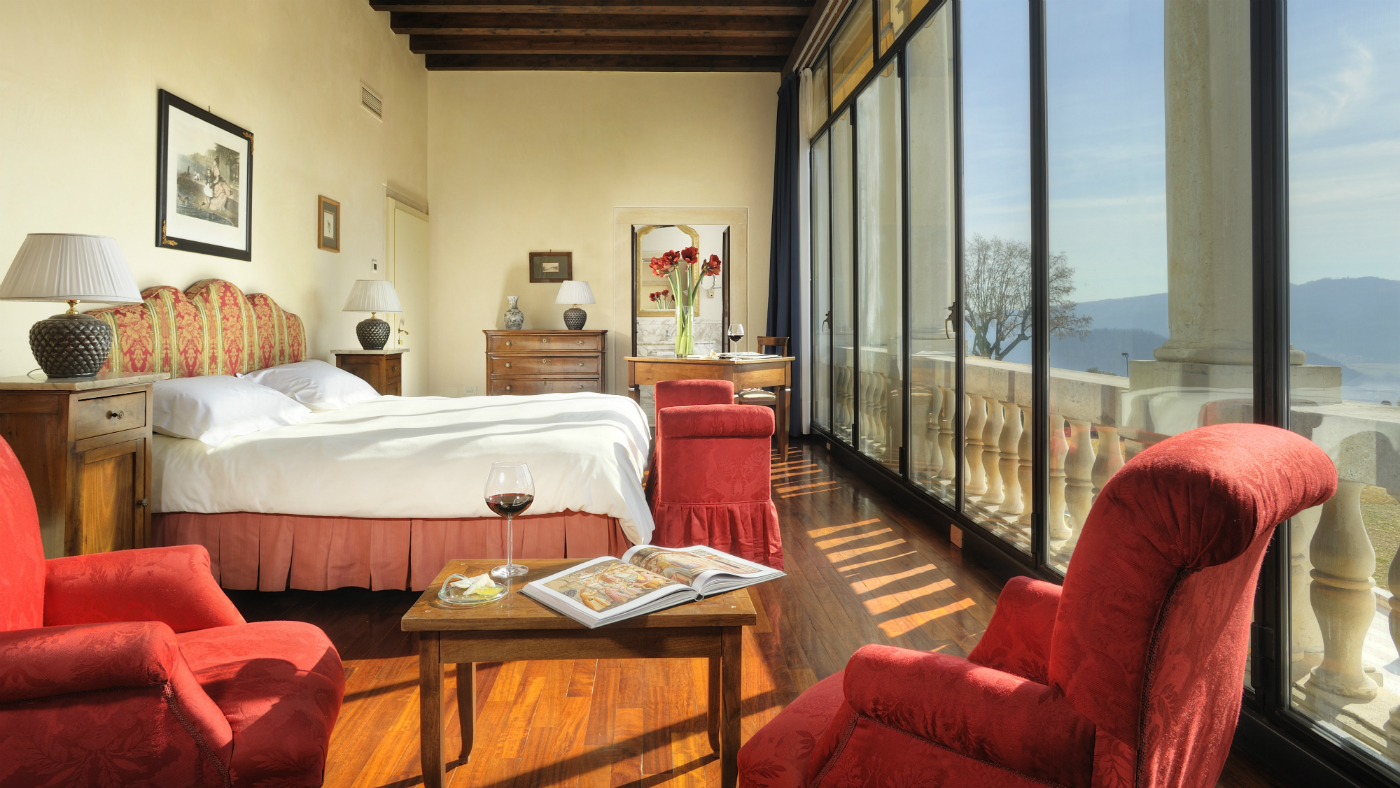
A short stroll takes you through a knockout highlight reel of Palladio's works, including the magnificent Teatro Olimpico, one of the oldest enclosed theatres in the world, and the Basilica Palladiana – a building Palladio designed aged just 38, which wraps a handsome Romanesque double-stone loggia around an existing Gothic building.
After taking it all in, the Hotel Villa Michelangelo beckons. A 15-minute drive up a mountainside leads directly to the hotel, whose view over the nearby village of Arcugnano is reason enough to travel here.
The hotel is a touch more modest than the Grand Hotel Vicenza, which is perhaps not surprising given it was built in the 18th century as the country house of the aristocratic Tomi family – a charming bolthole rather than a full-on palace.
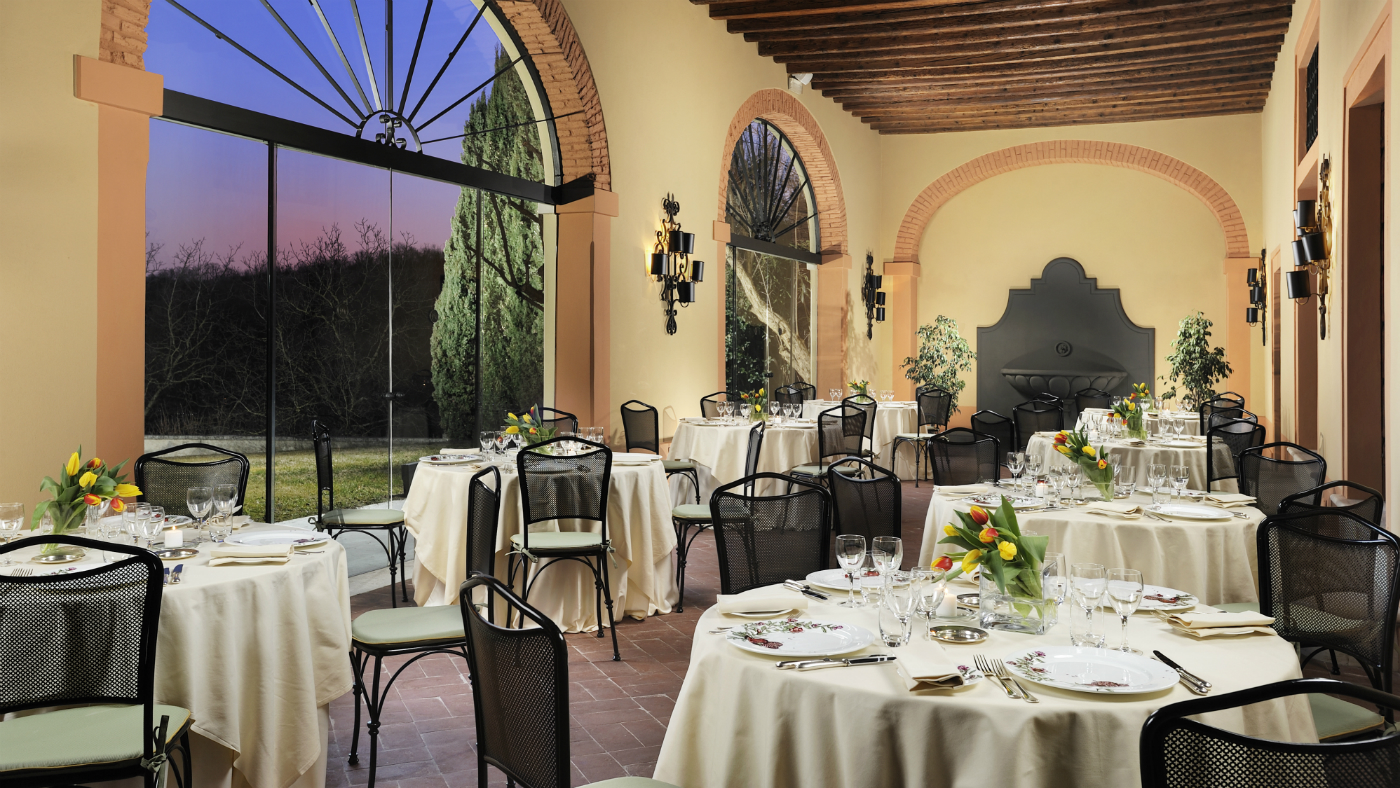
But oh what a bolthole it is. Period details have been preserved throughout, including original walnut beams and polished Venetian mosaic floors. Perhaps most pleasant of all are the gardens that surround the property, which when The Week Portfolio stayed were being gradually dressed for a weekend wedding. The setting sun over the marquee offered a glimpse of the spectacle to come.
Food here is rustic and simple, but very tasty. In the morning, an American buffet breakfast is served in the restaurant, while in the evening the menu turns Venetian, with a solid selection of high-quality wines on offer.
All the rooms look out to the surrounding lush green hills, but the executive suites are worth the extra cost, with their floor-to-ceiling windows that let in every last ray of the morning sun.
As dawn turns to day, we bid arrivederci to our temporary country idyll and set a course for:
Trieste - Savoia Excelsior Palace
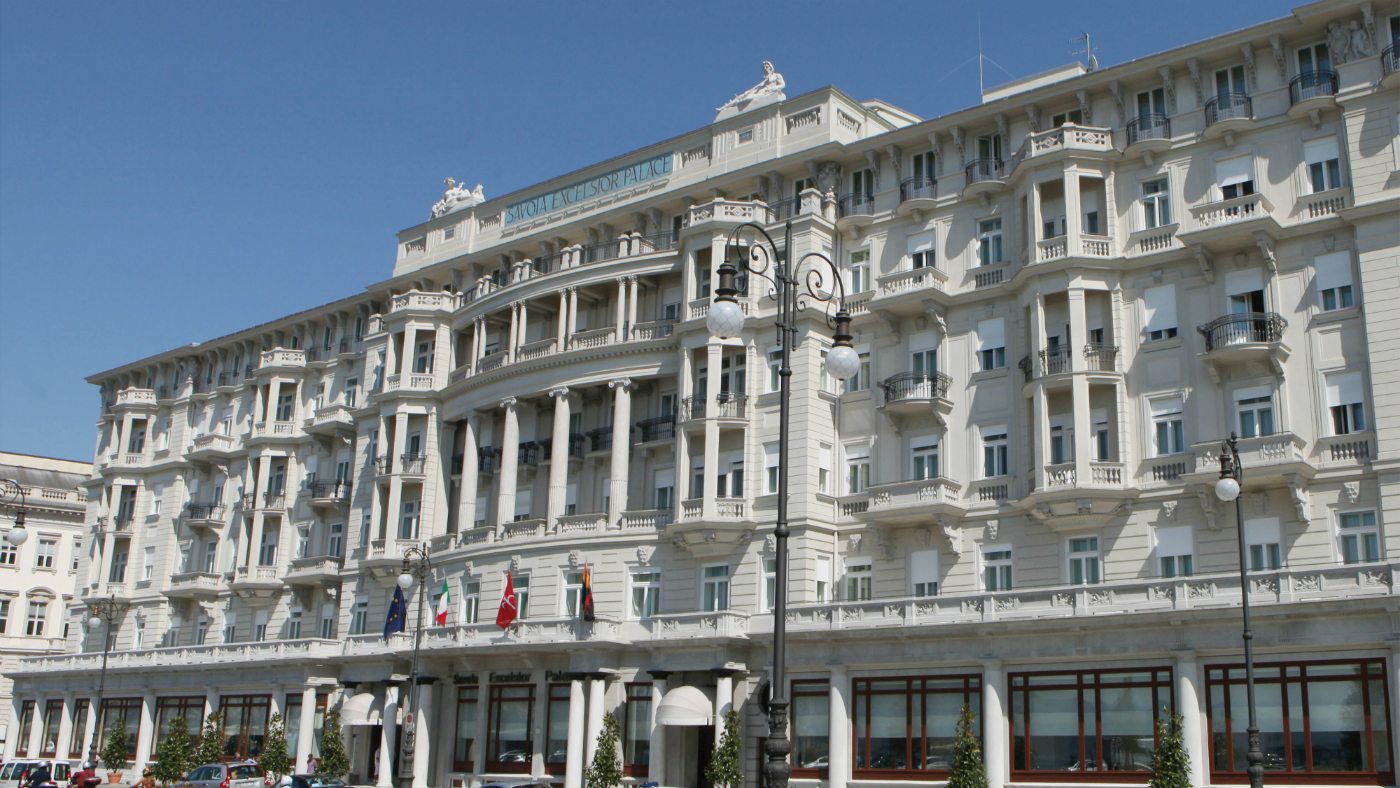
Italy, on its north-easternmost fringe is a fascinating mixture of empires, both ancient and modern. The coastal towns of Sistiana for example sits cheek by jowl with Nabrežina – names which neatly tell the story of how this slice of land blends cultures, cuisines and histories, via annexation, cohabitation and conquest.
It is worth taking time to see the countryside around Trieste, before settling in, especially with visits to the incredible caves of the Grotta Gigante and the photogenic port town of Portopiccolo.
There are also numerous sites of archaeological interest, perhaps the most spectacular of all being the early Christian mosaics at Aquileia – an excellent side trip.
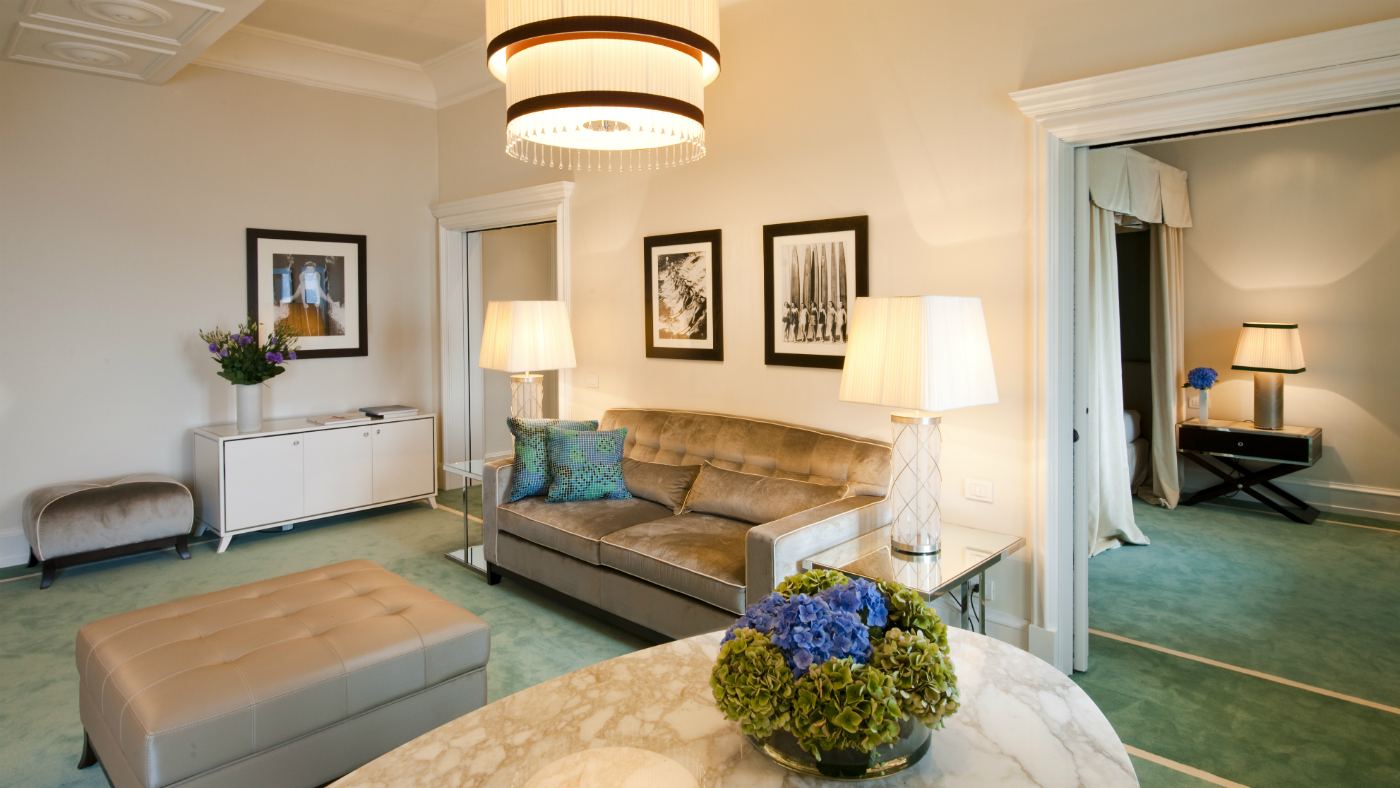
But Trieste is also a destination worth savouring in its own right. This gracious city is bursting with historical ruins, soaring cathedrals, and more of that cross-cultural food and heritage that makes this region so intriguing.
Our arrival in the city brings us straight to the door of the Savoia Excelsior Palace, our Cinquecento now caked in mud thanks to an ill-advised detour into a boggy field that left us in need of rescue by kindly local farmers. The state of our vehicle is, frankly, a disgrace, but the charming hotel team act as though we have arrived in a pristine Rolls Royce.
Once inside, we are checked in and taken to our suite, which overlooks the Bay of Trieste, where freighters bob just off shore, waiting their turn to sweep in and deposit their cargo, or simply to moor safely before heading out to sea.
The view is perfect, but possibly best enjoyed with the windows closed, because even at our height, the sound of the traffic below is loud when not muffled by double glazing.
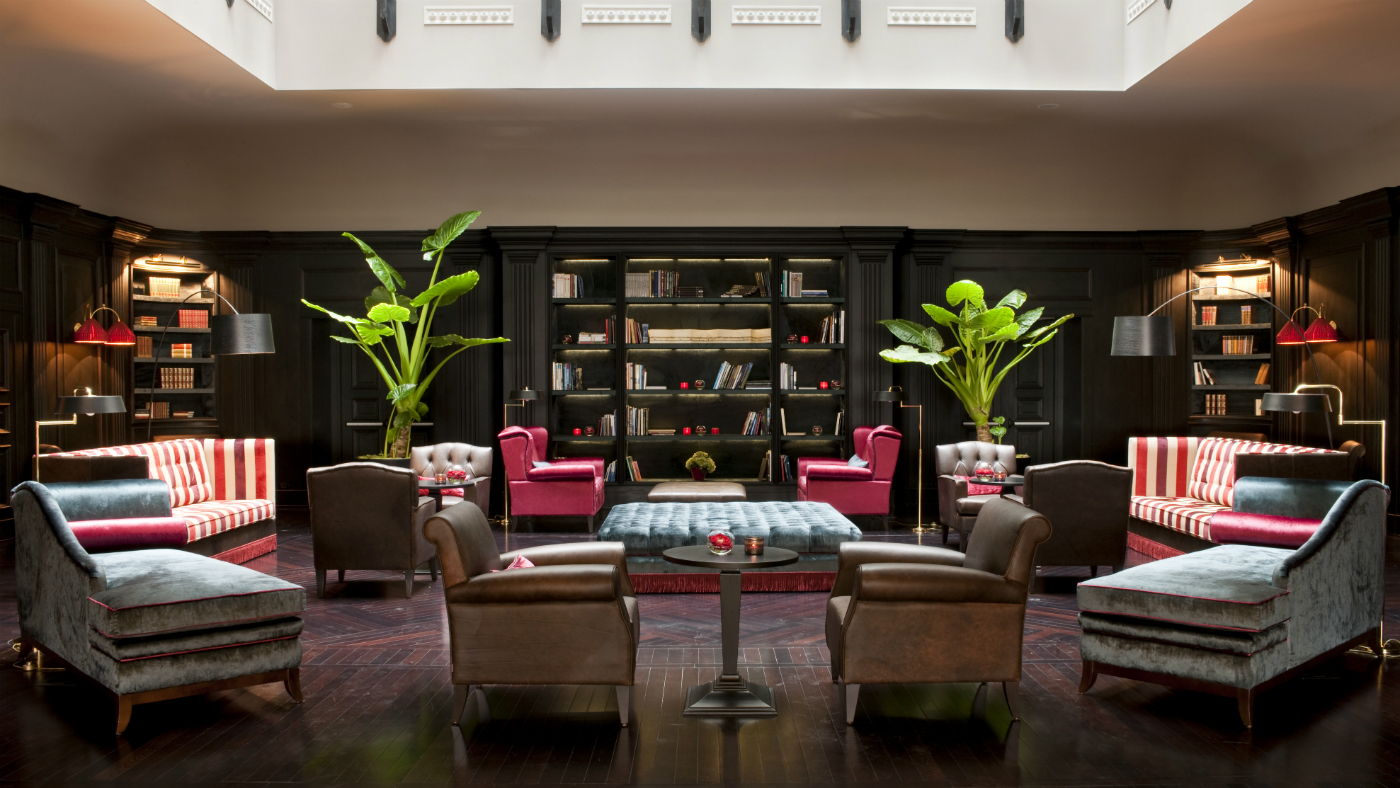
A key highlight of the hotel is the restaurant, which is a partnership with Italian produce specialists Eataly. While it has now spread internationally, Eataly began its life in the Italian north (though in fact over on the western edge of the country, rather than the east). The company adheres to the Slow Food ethos, striving to work with local ingredients and suppliers, with an eye on both quality and sustainability.
At the Savoia Excelsior Palace, this means specialities of the region, including Trieste classics such as ravioli filled with Carso cheese and dishes that hail from nearby Slovenia. The Rive Bar is also a perfect spot for sundowners, looking out across the gulf.
So what will a journey along this leg of the classical Grand Tour deliver, aside from an overload of calories? The key revelation for this reviewer was that while famous cities such as Siena and Trieste may bookend the trip, there are many lesser known glories to be found along the way. From picturesque small towns and remote archaeological sites to towering natural wonders, it is the tour between the headline destinations that makes this experience so grand.
Kirker Holidays (020 7593 2283, kirkerholidays.com) offers tailor-made short breaks throughout Italy – a seven night holiday following in The Week Portfolio’s footsteps starts from £897 per person including flights, car hire, accommodation with breakfast at the Grand Hotel Continental in Siena, Villa Michelangelo in Vicenza and the Savoia Excelsior Palace in Trieste, as well as Kirker Guide Notes to restaurants and sightseeing and the services of the Kirker Concierge to book opera, ballet and concert tickets or make a reservation at a recommended restaurant as required.
Rooms at the Grand Hotel Continental Siena – Starhotels Collezione from €220 (£195), at Villa Michelangelo Vicenza – Starhotels Collezione from €120 (£106), and at Savoia Excelsior Palace Trieste – Starhotels Collezione from €120 (£106). To book, and for more information visit starhotelscollezione.com.
Arion McNicoll is a freelance writer at The Week Digital and was previously the UK website’s editor. He has also held senior editorial roles at CNN, The Times and The Sunday Times. Along with his writing work, he co-hosts “Today in History with The Retrospectors”, Rethink Audio’s flagship daily podcast, and is a regular panellist (and occasional stand-in host) on “The Week Unwrapped”. He is also a judge for The Publisher Podcast Awards.
-
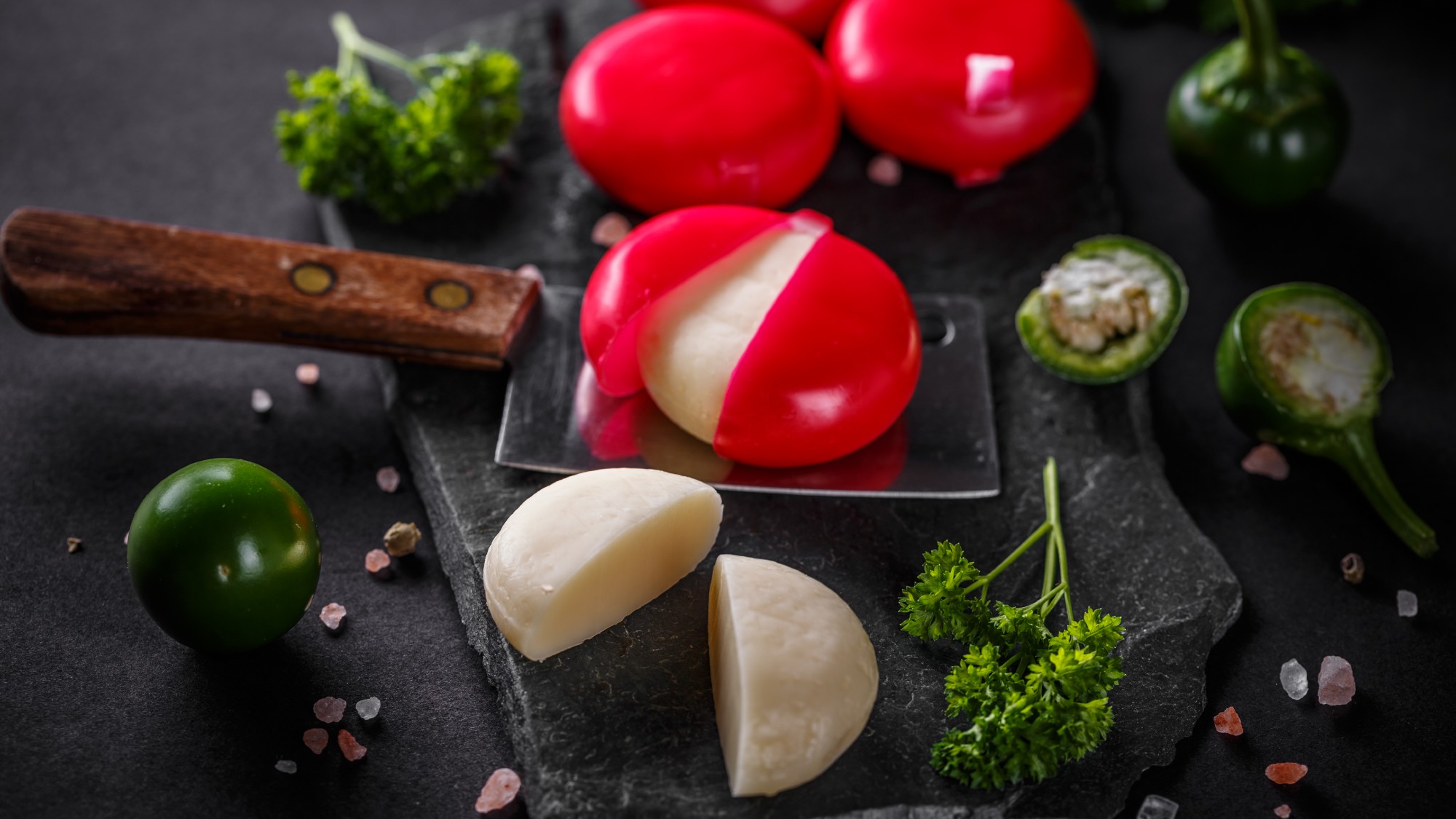 How weight-loss jabs are changing the way we eat
How weight-loss jabs are changing the way we eatIn The Spotlight Anti-obesity drugs have been a boon for Babybel but are supermarkets ready for a slimmed-down Christmas?
-
 Sudoku hard: December 18, 2025
Sudoku hard: December 18, 2025The daily hard sudoku puzzle from The Week
-
 Crossword: December 18, 2025
Crossword: December 18, 2025The daily crossword from The Week
-
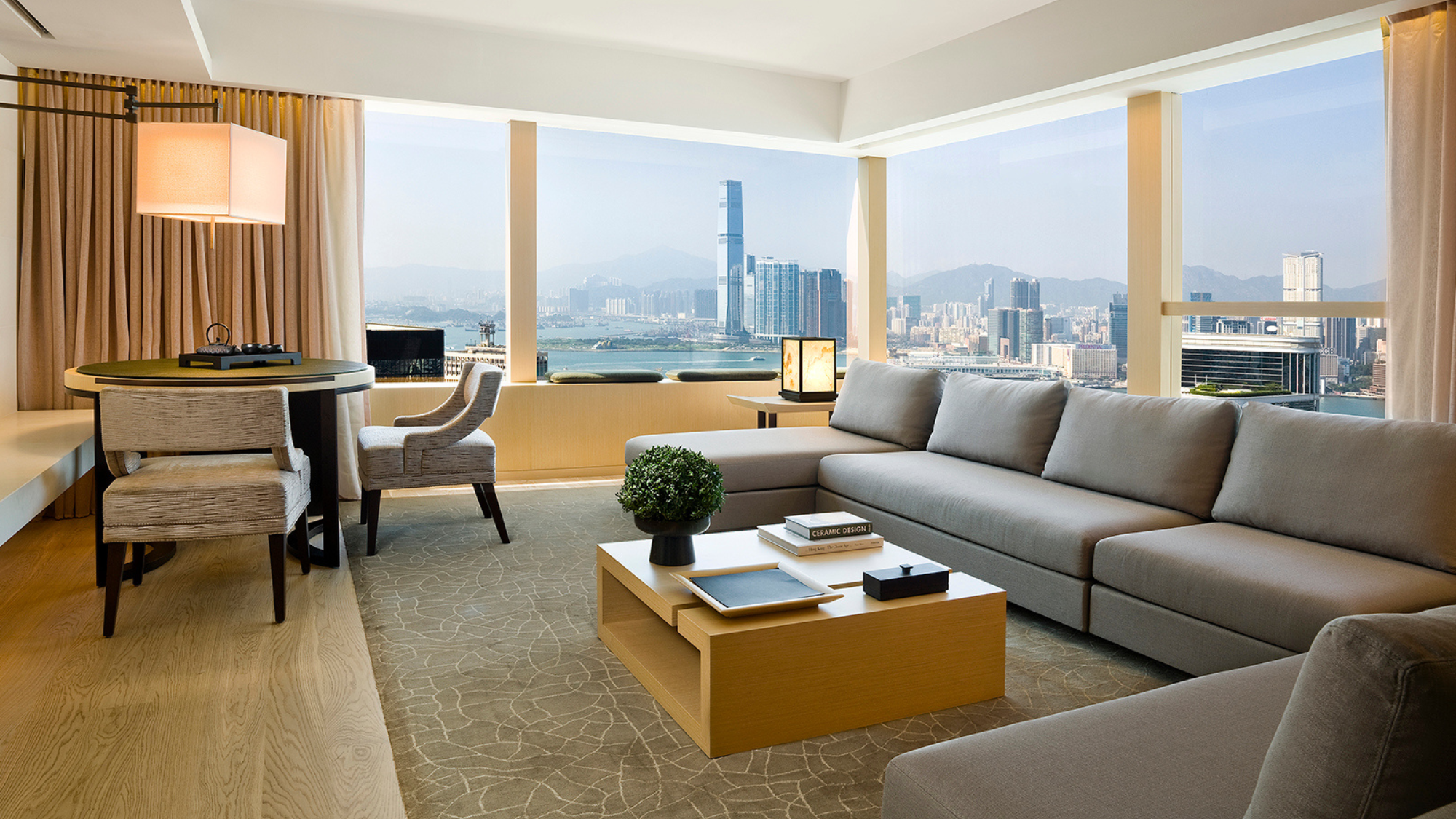 Upper House Hong Kong: a serene sanctuary in the bustle of the city
Upper House Hong Kong: a serene sanctuary in the bustle of the cityThe Week Recommends Panoramic harbour views and super-stylish interiors elevate this luxury hotel to another level
-
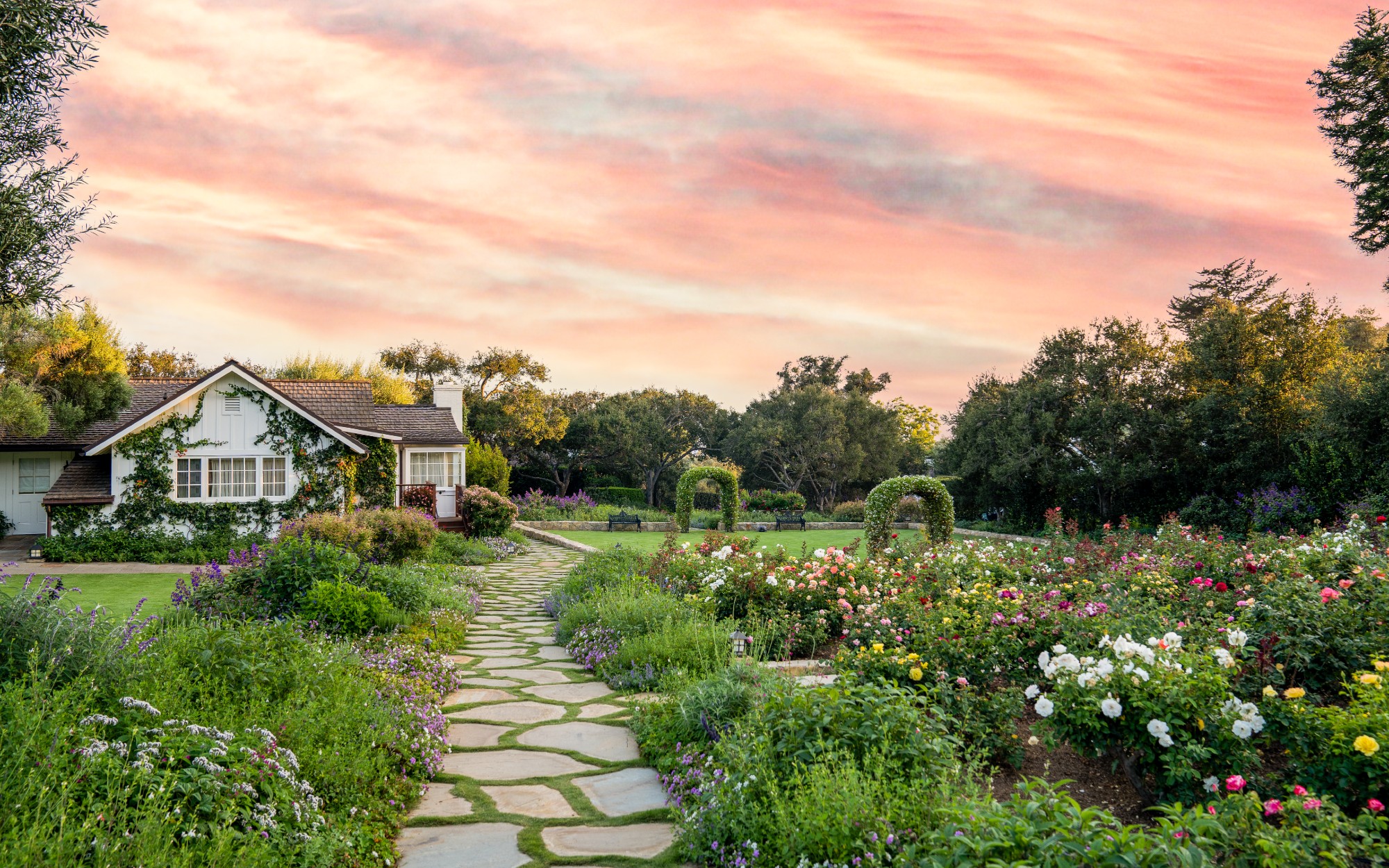 Step into a fairy tale at San Ysidro Ranch
Step into a fairy tale at San Ysidro RanchThe Week Recommends This historic Californian hideaway is pure magic
-
 The Old Bell Hotel: whimsy and charm in historic Wiltshire
The Old Bell Hotel: whimsy and charm in historic WiltshireThe Week Recommends Giraffes, monkeys and bold, bright colours add a playful touch to this 800-year-old inn
-
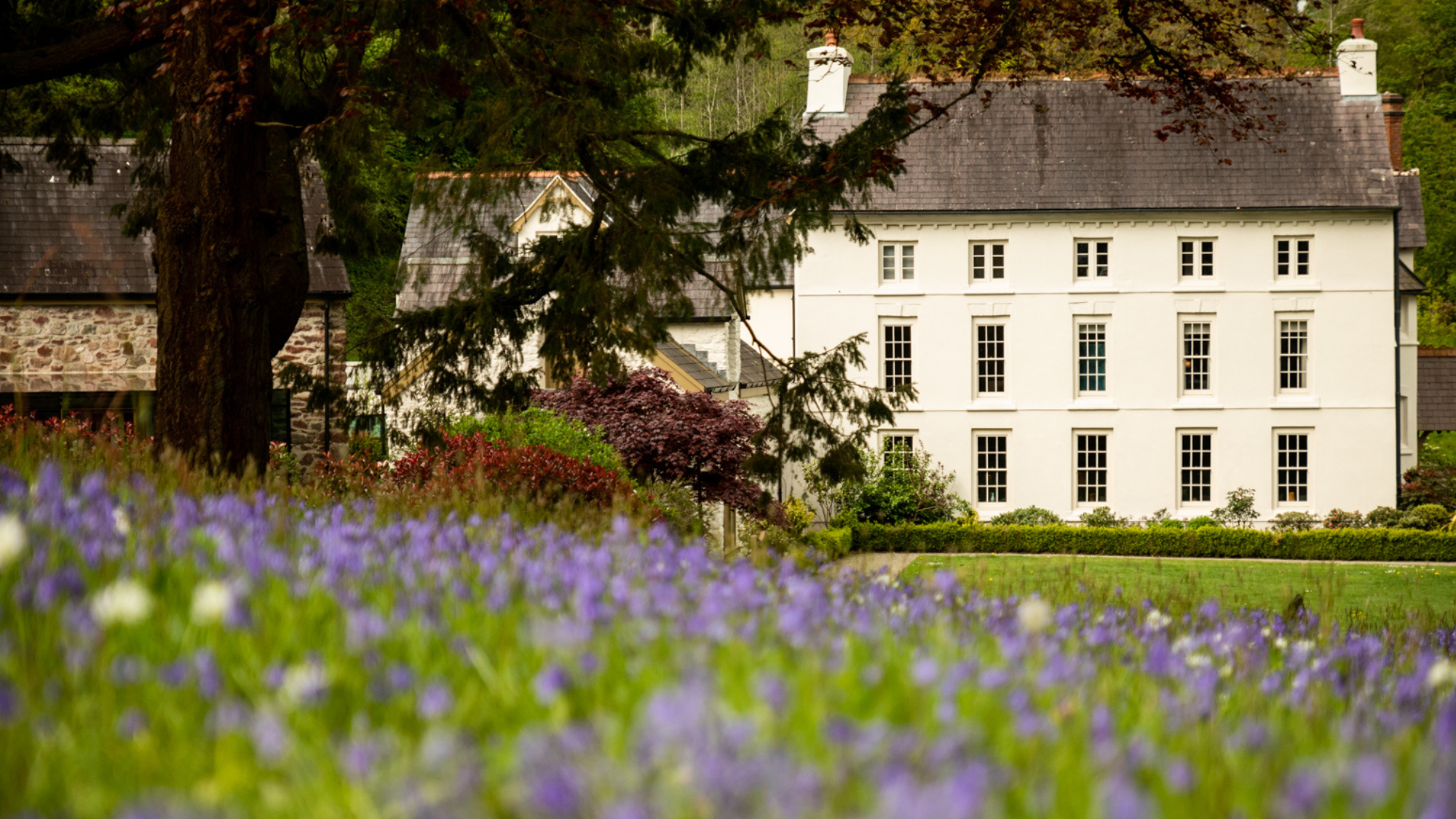 Grove of Narberth: comfort and style in the Welsh countryside
Grove of Narberth: comfort and style in the Welsh countrysideThe Week Recommends This boutique Georgian manor in Pembrokeshire is the perfect rural retreat
-
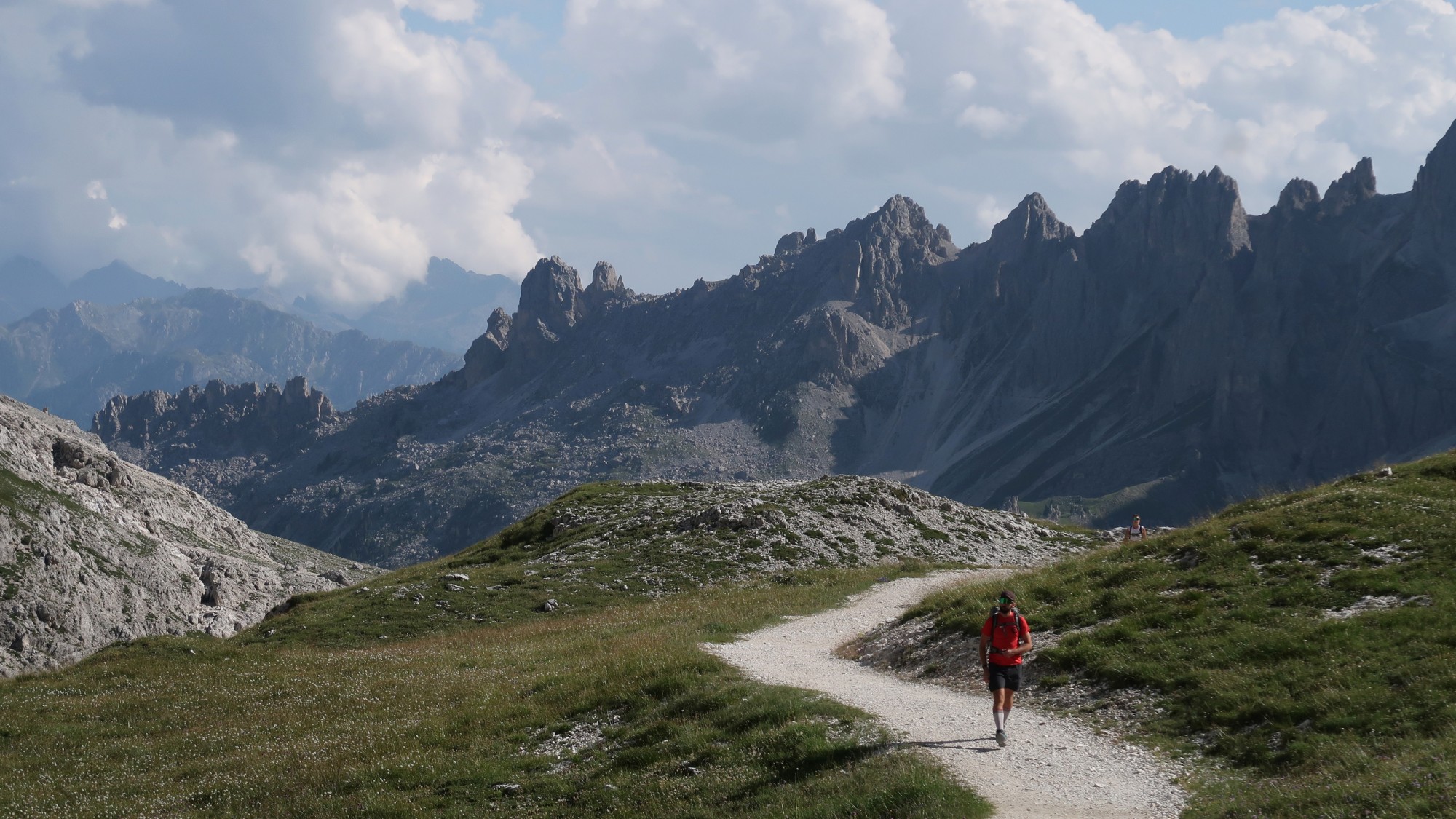 The best adventure holidays for adrenaline junkies
The best adventure holidays for adrenaline junkiesThe Week Recommends Five destinations perfect for outdoor thrill-seekers
-
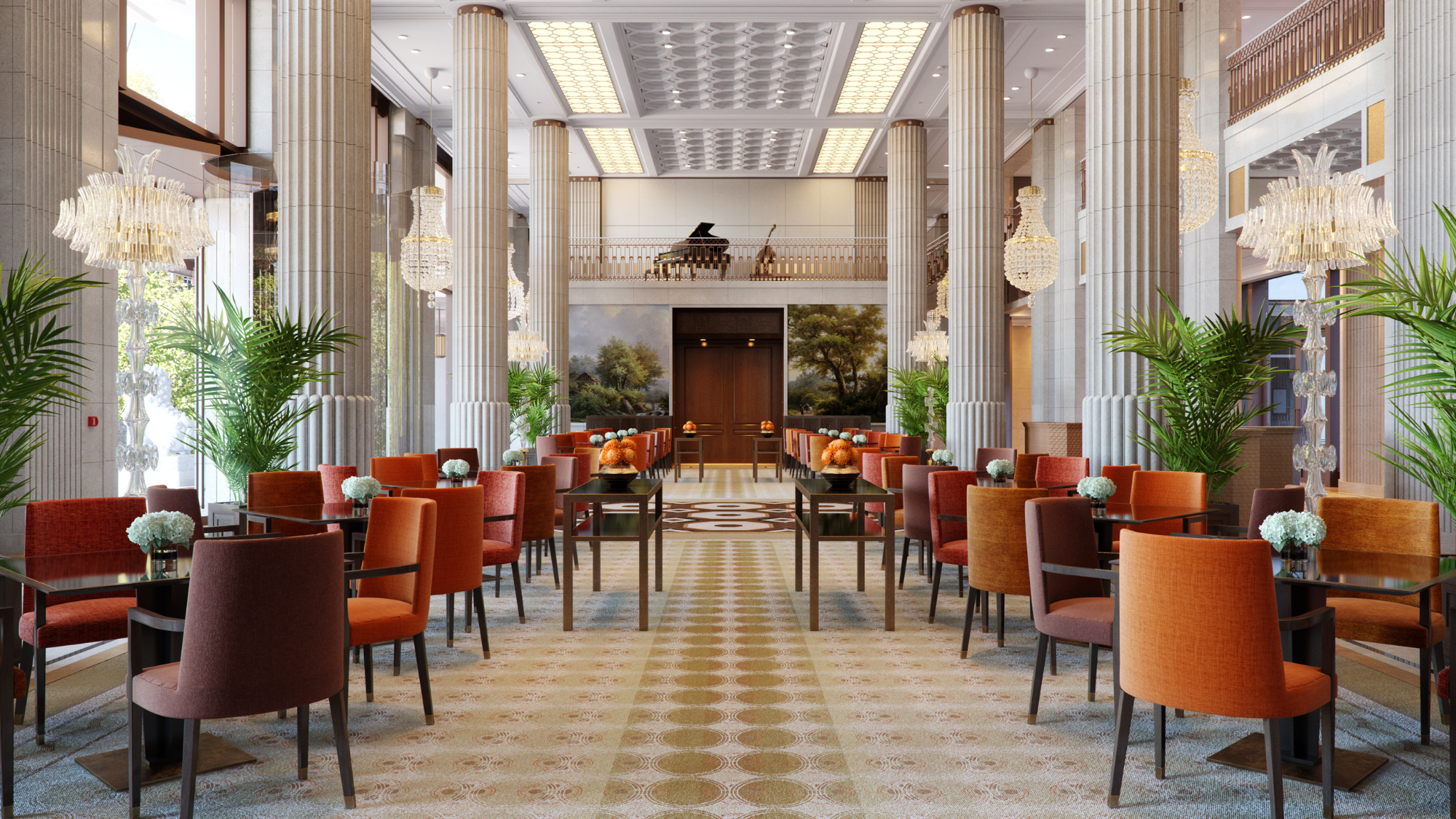 The Peninsula: London’s first billion-pound hotel
The Peninsula: London’s first billion-pound hotelThe Week Recommends As the capital’s super-luxury hotel scene continues to expand, the respected brand is still setting the standard
-
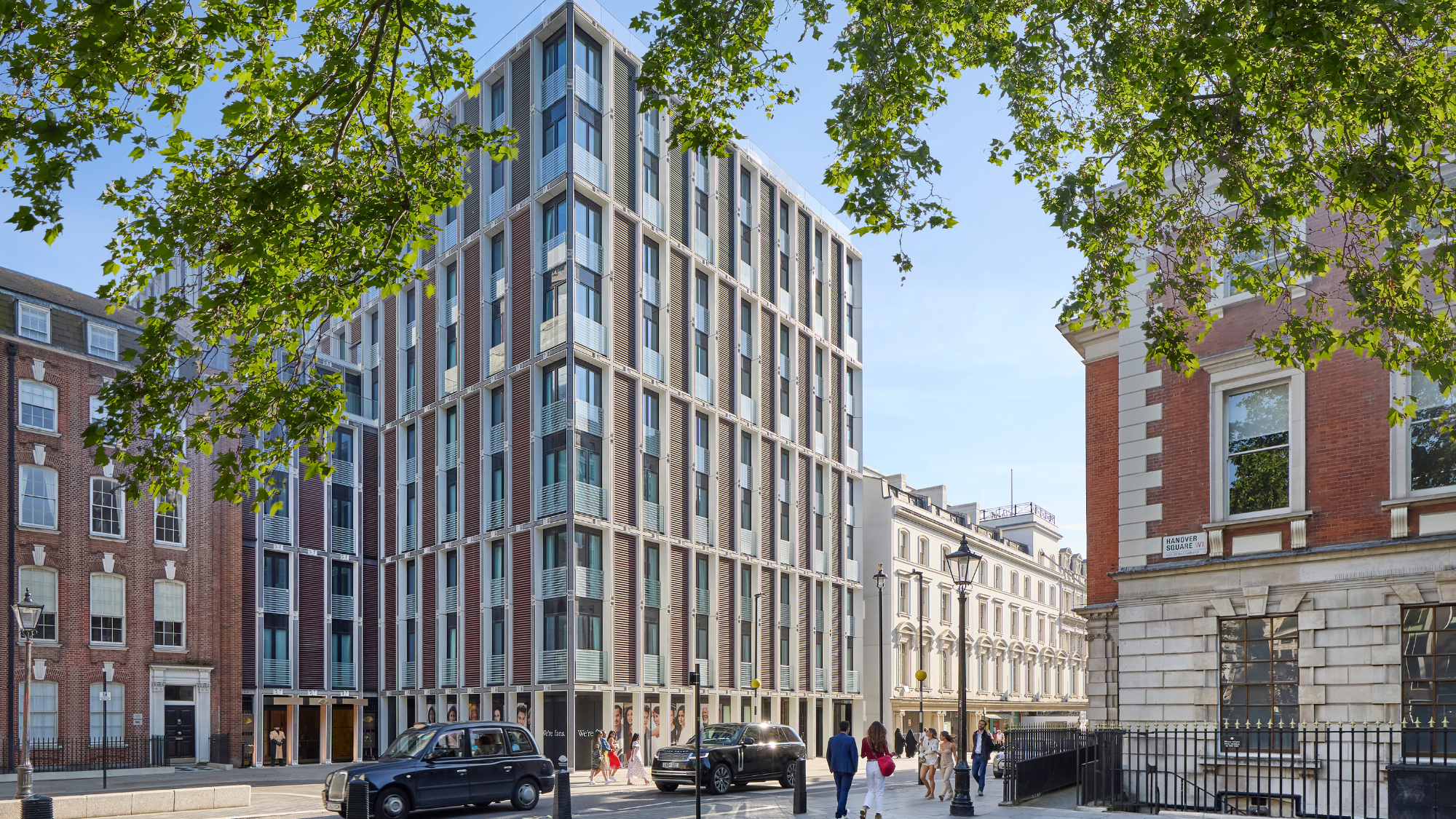 The Mini-Mayfair package at Mandarin Oriental
The Mini-Mayfair package at Mandarin OrientalThe Week Recommends Keep the kids entertained with a family-friendly stay at one of London’s swankiest hotels
-
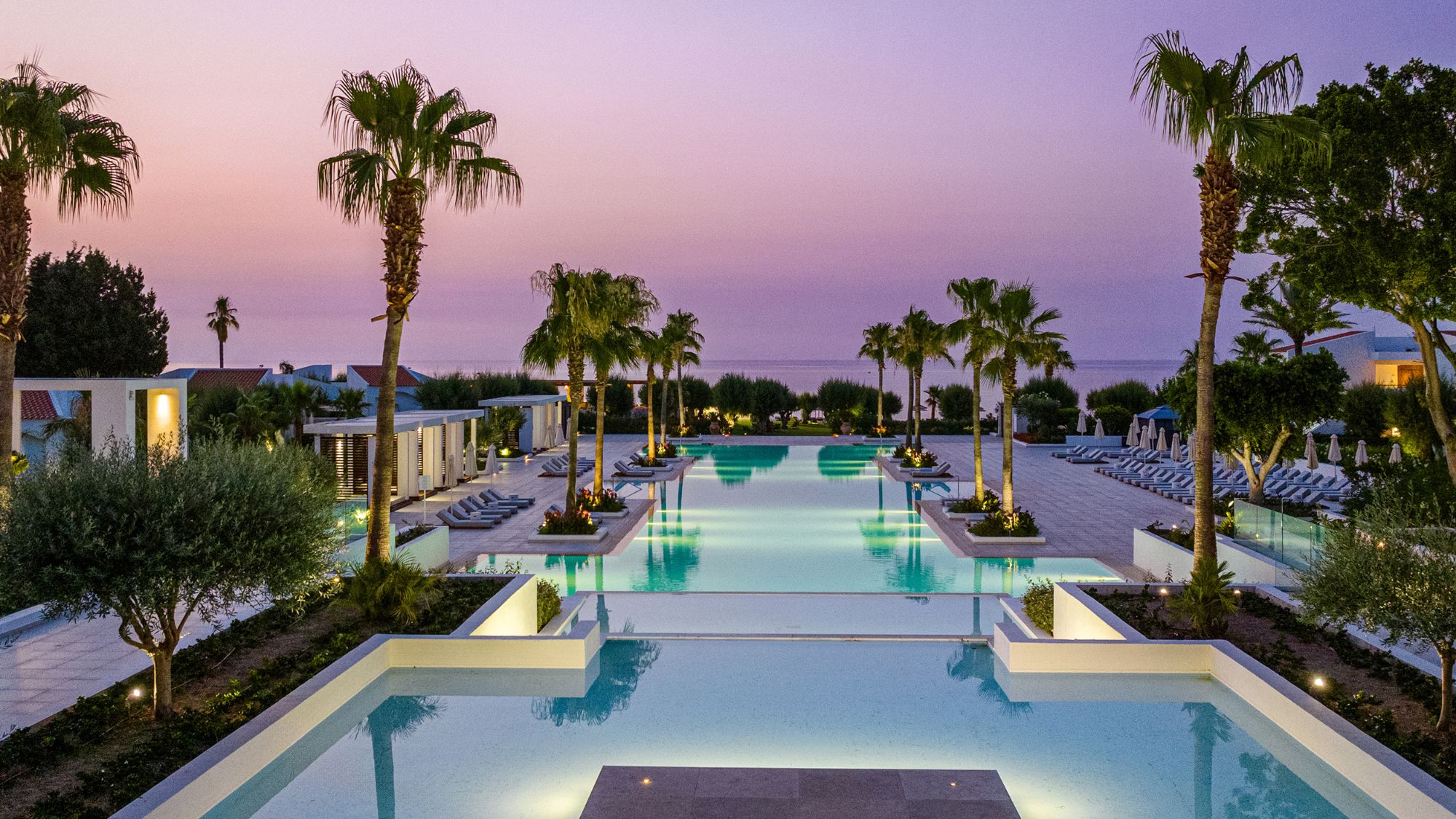 Grecotel Luxme Dama Dama: Greek luxury with a breezy beach vibe
Grecotel Luxme Dama Dama: Greek luxury with a breezy beach vibeThe Week Recommends Rhodes is reimagined in this refined and relaxed resort